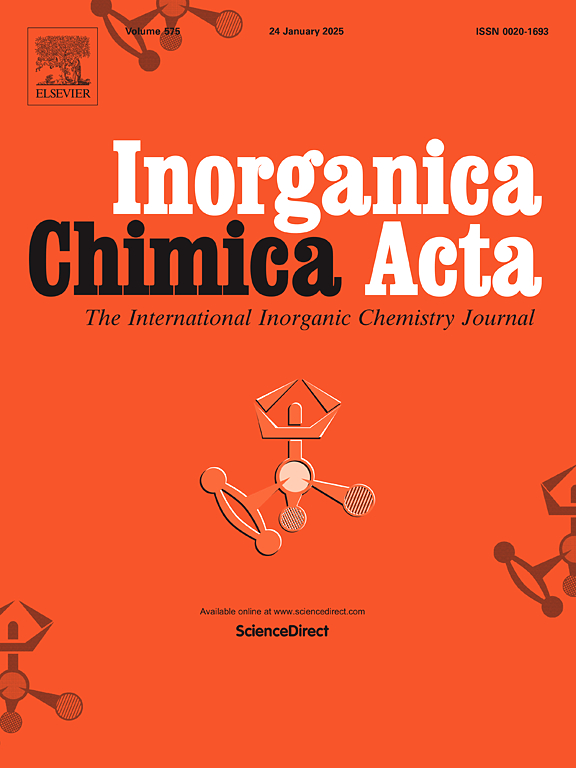Two 2D coordination polymers derived from 1-(2-carboxyethyl)-4,4′-bipyridinium bromide: Photochromism
IF 2.7
3区 化学
Q2 CHEMISTRY, INORGANIC & NUCLEAR
引用次数: 0
Abstract
We synthesized and structurally analyzed two new two-dimensional (2D) viologen coordination polymers, [Cd(CBbpy)(p-BDC)·H2O]n (1) and [Co2(CBbpy)2(m-BDC)(H2O)4·0.5(m-BDC)·2H2O]n (2), which originate from 1-(2-carboxyethyl)-4,4′-bipyridinium bromide (HCBbpyBr). Single-crystal X-ray diffraction analysis shows that compound 1 crystallizes within the monoclinic space group P21/n, whereas compound 2 crystallizes in the C2/c space group. The photochromic properties of two compounds were studied under ambient conditions. Upon UV irradiation, compound 1 exhibits a rapid and reversible color change. Compound 2, however, shows no noticeable photochromic response under similar conditions. Structural analysis indicates that strong hydrogen bonding in compound 1 contribute to its chromic stability and reversible electron transfer between electron-donating and electron-withdrawing groups. These findings highlight the importance of metal coordination environments and noncovalent interactions in the design of advanced viologen-based photochromic materials.

求助全文
约1分钟内获得全文
求助全文
来源期刊

Inorganica Chimica Acta
化学-无机化学与核化学
CiteScore
6.00
自引率
3.60%
发文量
440
审稿时长
35 days
期刊介绍:
Inorganica Chimica Acta is an established international forum for all aspects of advanced Inorganic Chemistry. Original papers of high scientific level and interest are published in the form of Articles and Reviews.
Topics covered include:
• chemistry of the main group elements and the d- and f-block metals, including the synthesis, characterization and reactivity of coordination, organometallic, biomimetic, supramolecular coordination compounds, including associated computational studies;
• synthesis, physico-chemical properties, applications of molecule-based nano-scaled clusters and nanomaterials designed using the principles of coordination chemistry, as well as coordination polymers (CPs), metal-organic frameworks (MOFs), metal-organic polyhedra (MPOs);
• reaction mechanisms and physico-chemical investigations computational studies of metalloenzymes and their models;
• applications of inorganic compounds, metallodrugs and molecule-based materials.
Papers composed primarily of structural reports will typically not be considered for publication.
 求助内容:
求助内容: 应助结果提醒方式:
应助结果提醒方式:


